Terrifying And Beautiful Supercell Photos Captured By A Storm Chaser
During the first storm Dobrowner chased with Hill, he became awestruck by the storm as it moved towards them at 40 miles per hour. "I just stood there, mesmerized, with Roger shouting, 'We gotta go! We gotta go, now!'” said Dobrowner.

During spring in Tornado Alley, moisture from the Gulf of Mexico, cold air from the Rockies, and the eastern jet stream collide, resulting in violent storms.
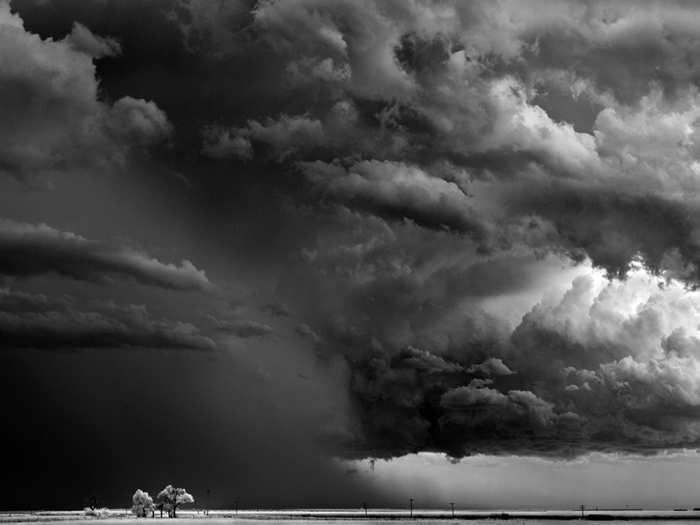
"Trees-Clouds," Texline, Texas, 2009
As the storms move north, they become slow moving and often turn into supercells, the most severe type of thunderstorm.

"Barber Pole," Glendale, North Dakota, 2010
Hill gets Dobrowner to the right locations to photograph the storm, analyzes the radar, determines the stability of the atmosphere, and arranges an exit strategy.
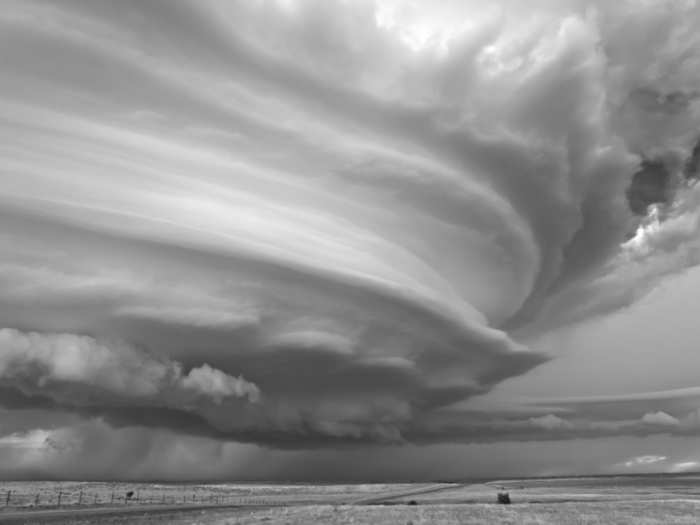
"Chromosphere," Green Grass, South Dakota, 2012
Dobrowner usually photographs storms in July, as it provides the most visually interesting storms.

"Dark Star," Gainsville, Texas, 2011
When they chased this storm in July 2010, an ABC News crew tagged along. They thought they were watching from a safe distance from the storm when it suddenly changed directions and began to shoot baseball-sized hailstones at them. It destroyed the ABC News crew's cameras.

"Bear’s Claw," Moorcroft, Wyoming, 2010
Some days, Dobrowner and Hill will travel as much as 900 miles to keep up with a storm.
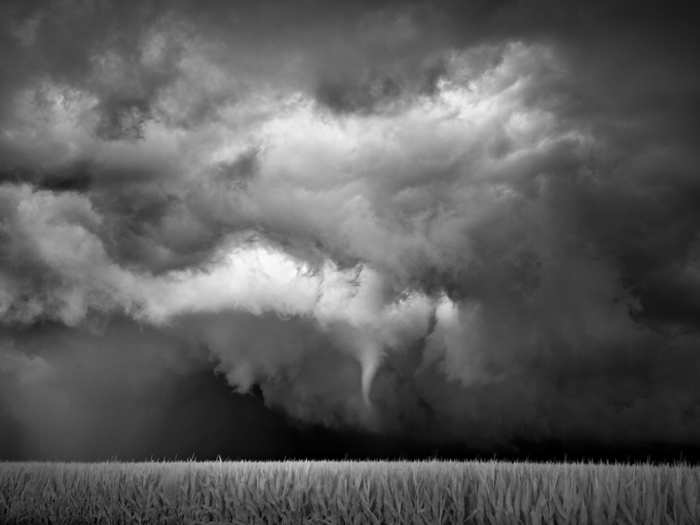
"Funnel-Cornfield," Northfield, Minnesota, 2010
"This was a storm that we chased from the Texas panhandle all the way into eastern New Mexico," Dobrowner says.
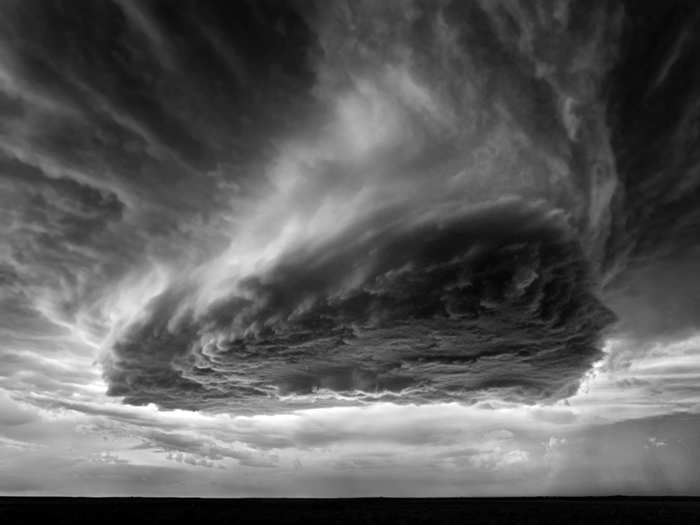
"Vapor Cloud," Clayton, New Mexico, 2009.
"My experience of this storm was like watching a monster in the dark — as we were not able to see it until a series of lightning bolts rang down from the sky," Dobrowner says.
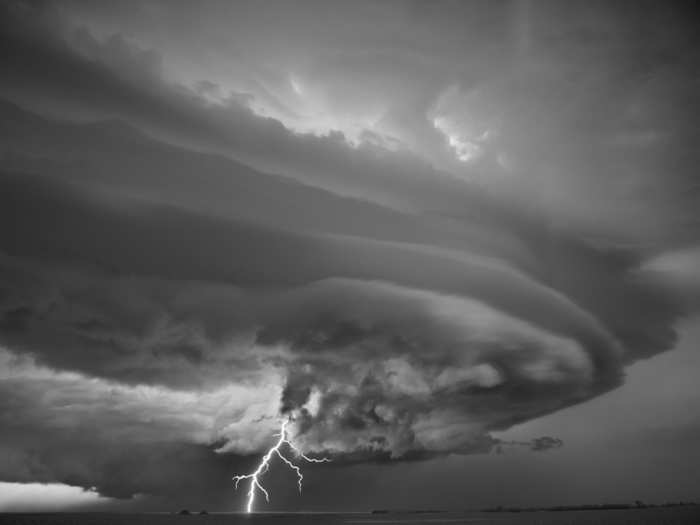
"Jupiter," Mobridge, South Dakota, 2011.
Storms can change form fast. With the right wind conditions, they become what storm chasers call a "mothership," which is marked by its distinct structure and appearance of floating.
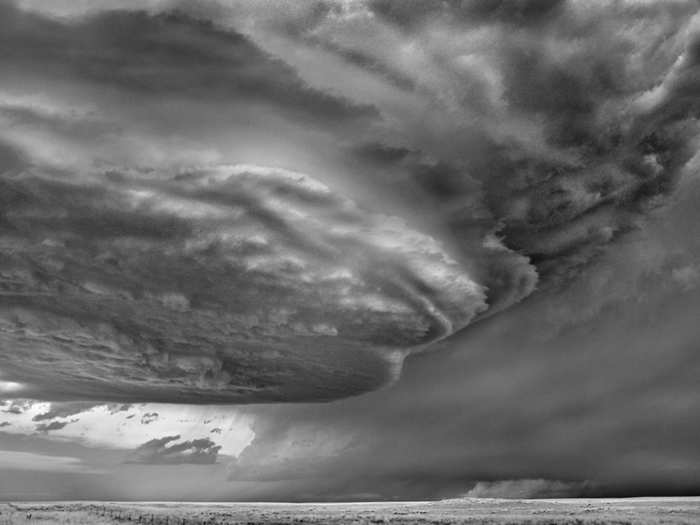
"Mothership," Obar, New Mexico, 2009
"My goal was to capture the image of a storm that emulated an atomic explosion," Dobrowner says of this picture.
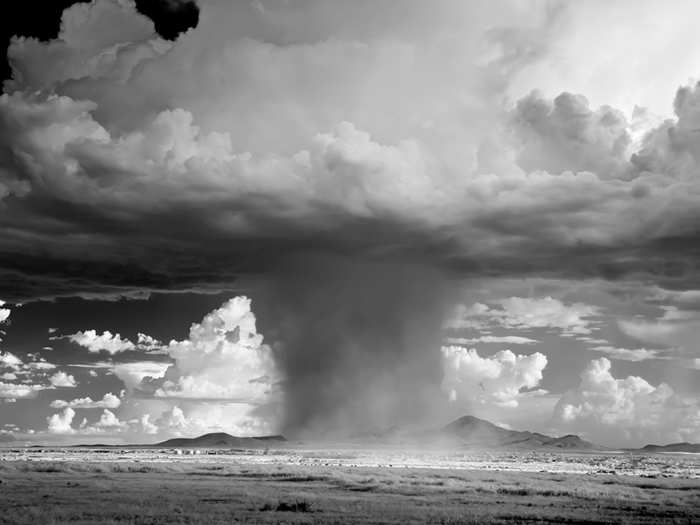
"Monsoon," Lordsburg, New Mexico, 2010.
Storm chasing isn't all action. Sometimes, Dobrowner can spend up to a week in his hotel waiting for a storm to reach the right conditions for photographing.
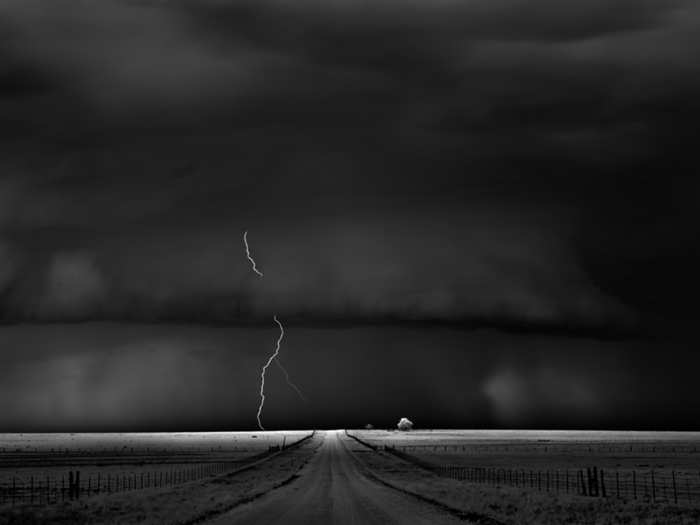
"Road," Guymon, Oklahoma, 2009
When a tornado starts to die, it begins to "rope out," as seen in this picture. Dobrowner had been trying to capture this picture for years, which he likens to something from The Wizard of Oz.
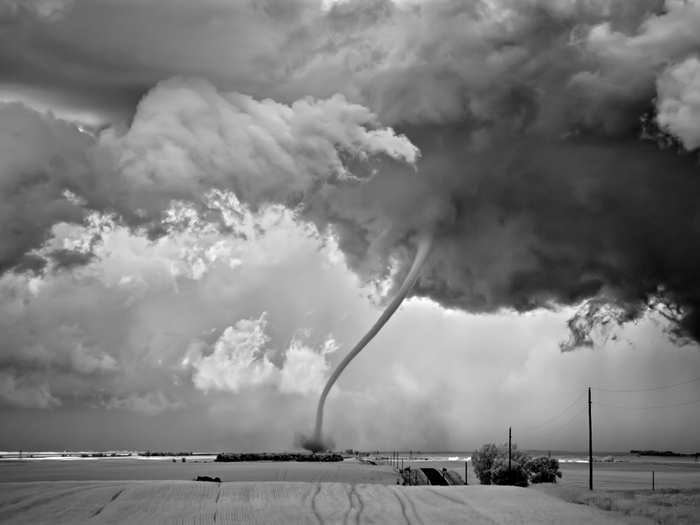
"Rope Out," Regan, North Dakota, 2011.
Storms can leave a trail of devastation. On the way back from chasing one storm, Dobrowner saw 100 miles of corn decimated.
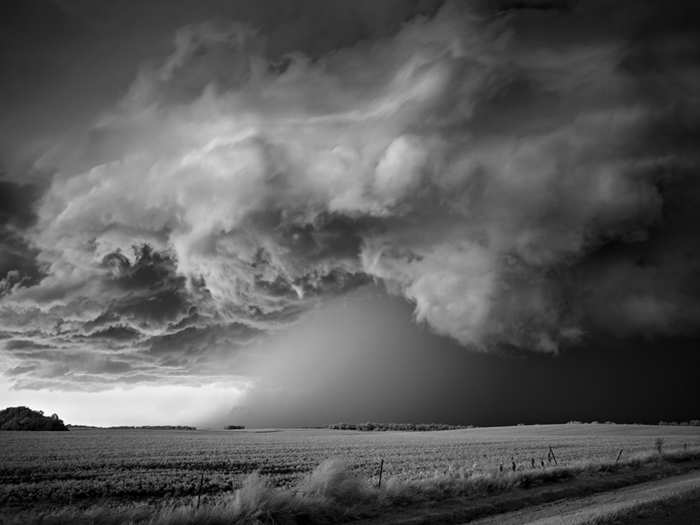
"Storm over Field," Lake Poinsett, South Dakota, 2010
When the storms push north into Canada, they lose energy and dissipate.
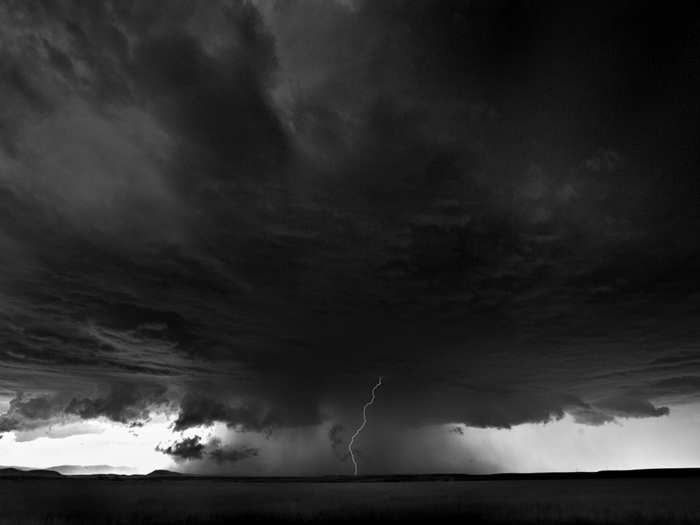
"Wall Cloud," Davidson, Wyoming, 2009
Meet more daring photographers.
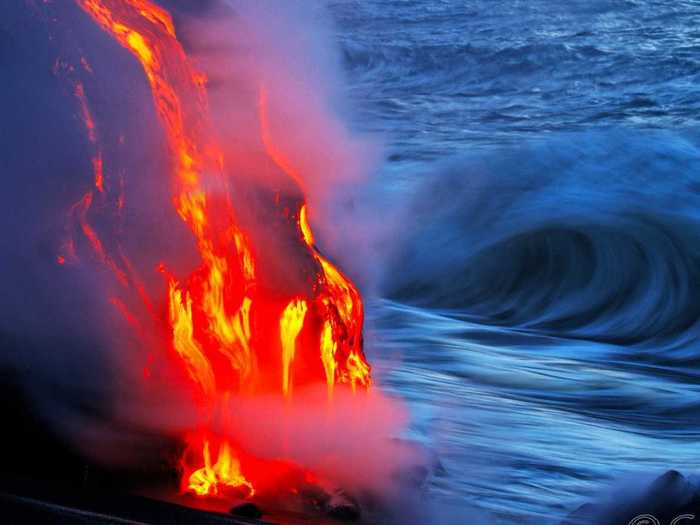
Popular Right Now
Advertisement